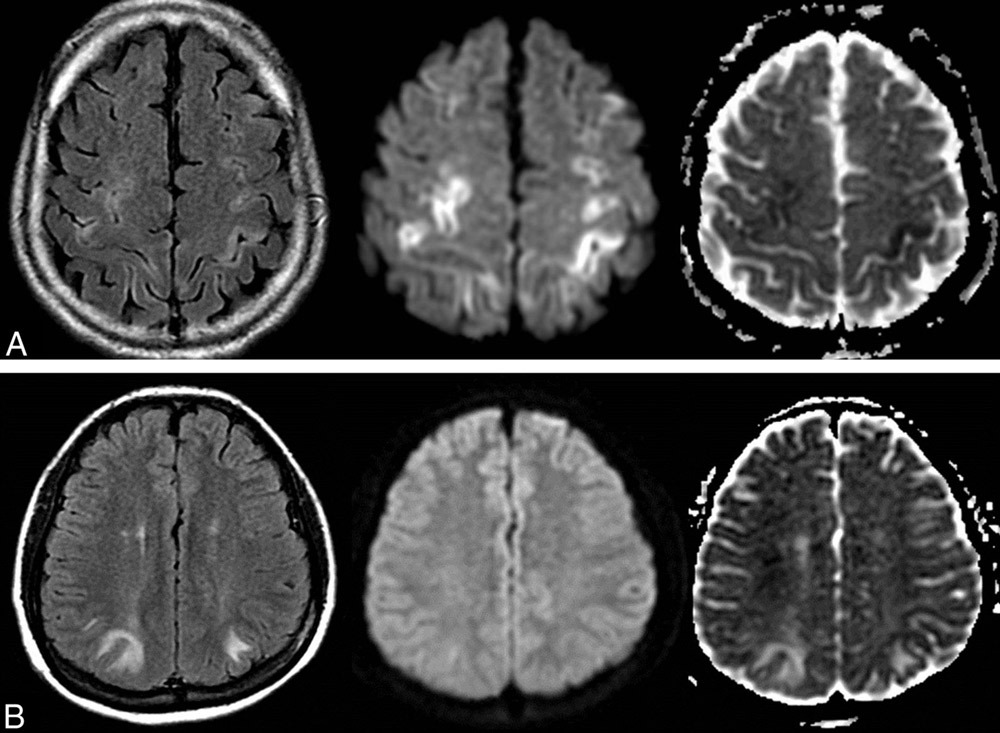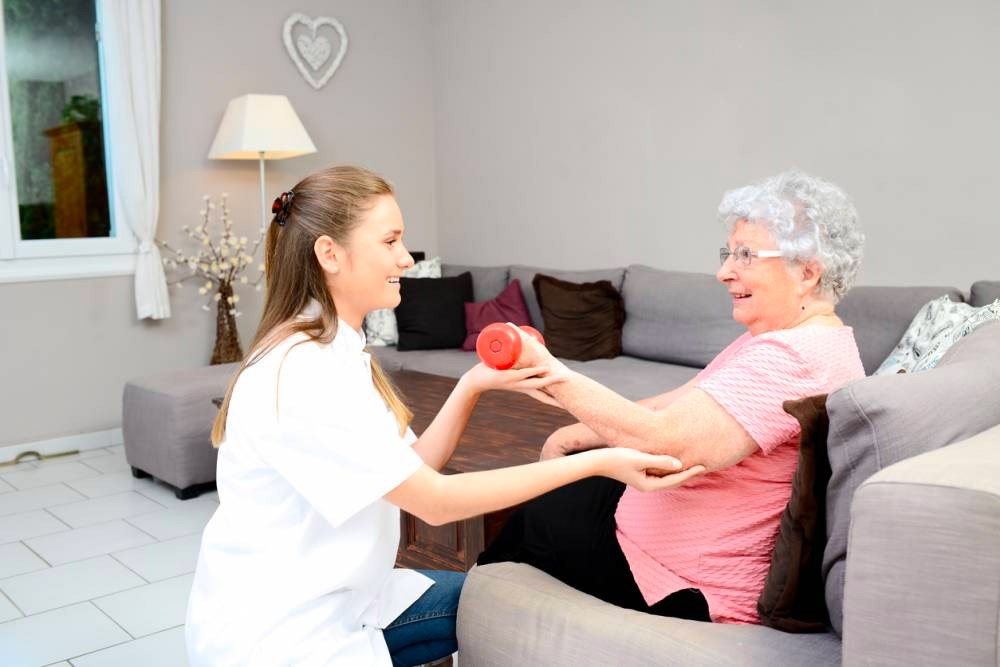Although strokes are more common in the elderly, people of any age may suffer them. The damage that stroke causes is swift and often debilitating, depending on the area of the brain affected, as well as the severity of the episode. Getting immediate care can minimize the effects of a stroke, but patients only spend time in the hospital until their situation has stabilized. Once they are released, most need some type of stroke rehabilitation to recover from the injuries that their brain has suffered.
You may feel that your doctor is evasive about how long the stroke recovery process will take for a loved one, but hearing, “It depends,” is quite common, especially during the early stages of recovery. The exact timeline and level of improvement that patients experience do differ. After a few weeks, your doctor will generally have a better idea about your loved one’s recovery. Just about everyone who has a stroke will experience some level of significant improvement. The amount of therapy provided, as well as the patient’s efforts, also make a decided difference.
The stroke recovery process depends on several important factors:
-
The location of the stroke in the brain and which functions are damaged
-
How quickly medical intervention occurred
-
The age and general health of the patient
-
The quality and comprehensiveness of rehabilitation
Mini Stroke vs. Mild Stroke

Chances are, you have heard both of these terms, and they are often used interchangeably. A mini-stroke is also known as a TIA, a trans ischemic attack. Mini stroke recovery generally occurs within 24 hours as symptoms disappear within that period. The Mayo Clinic notes that the symptoms of a regular stroke are often the same as those of a TIA and include:
-
Weakness, numbness or paralysis in the face, arm or leg, usually on one side of the body
-
Slurred or garbled speech
-
Blindness or double vision
-
Vertigo or loss of balance or coordination
Mini strokes are warnings that frequently point to a more severe impending stroke. However, patients who suffer regular strokes may not have severe impairments. In such cases, mild stroke recovery could be significantly shorter than for those patients whose impairments are severe.
Factors in Stroke Recovery
Stroke recovery can be slow and subtle. The most rapid changes usually occur during the first few weeks, with some improvements even happening spontaneously. Most people need interventions to help recovery and maximize function. The following factors can affect the severity of a stroke.
Brain Edema

Following a stroke, most patients experience some inflammation in the brain, similar to swelling following a body injury. Brain edema is the body’s way of repairing itself and consists of fluid and inflammatory cells. Edema can compress the brain and cause stroke symptoms to worsen temporarily. This condition develops 24 to 48 hours following the stroke and reaches its peak with five days. Afterward, Edema slowly decreases.
Blood Pressure

Expect fluctuations in blood pressure after a stroke. These blood pressure shifts are also part of the body’s healing response. Medical management of blood pressure in the first few days generally consists of observation of blood pressure shift and little intervention.
Blood Sugar
Changes in blood sugars and stress hormones are also frequent in the days following a stroke and will eventually stabilize.
Brain Recovery
Once the above factors begin to stabilize, the brain starts to heal, and medical management starts to focus on preventing symptoms from worsening. Within a few days, most patients generally see the restoration of brain function and brain cell recovery.
Therapy
Proper therapy is critical in helping the brain recovery as it aids in neuroplasticity. Overcoming visual or spatial challenges are often some of the biggest challenges, while mood also affects recovery, so attention to depression and anxiety is essential. As many as 30 to 50 percent of stroke survivors suffer from depression post-stroke, which can significantly affect one’s recovery and rehabilitation.
Side Effects

Some stroke patients can suffer side effects, including seizures, muscle atrophy, and spasticity.
How Does Rehabilitation Affect the Stroke Recovery Process?

After suffering a stroke, many patients will have problems with speech, mental, and physical functions and will require rehabilitation after leaving the hospital. The Cleveland Clinic notes that rehabilitation programs are critical in helping patients to regain lost skills so that they can regain their independence. Even if neurological problems remain, rehabilitation can help patients learn ways to compensate for their problems.
Rehabilitation programs should begin as soon as possible after the stroke and are most successful when it involves a team effort. The stroke patient and his or her family should work together with a physician and other health care professionals to develop a plan. To that end, family support is essential as family members can reassure loved ones that they are wanted, needed, and still important to the family.
Where Does Stroke Rehabilitation Take Place?
Most patients go through several stroke recovery stages and usually begin some form of therapy while still in the hospital. Before leaving the hospital, you can expect your doctor and hospital social workers and therapists to work out a long-term care plan for your loved one and determine the best setting for rehabilitation. Several different settings are available with selection based on the level of disability and the patient’s prognosis. An effective rehabilitation program allows patients to recover at a pace that fits their abilities and will also involve consideration of the following factors:
-
The presence of arthritis, kidney, disease, heart disease or other medical conditions
-
Insurance coverage for rehabilitation services
-
Availability of family and friends
Therapy can occur in several different settings, with patients sometimes moving from one setting to the next as they improve and their needs change. Rehab immediately following hospital treatment often takes place at inpatient rehabilitation that may be part of a hospital or freestanding buildings. The average time spent in one of these facilities is two to three weeks.
This stage is called acute rehabilitation and involves three or more hours of therapy at least five days per week. Patients must have the ability to tolerate and benefit from intensive exercise. Doctor visits are frequent.
Following inpatient rehabilitation, patients move to subacute or skilled nursing rehabilitation, which can occur on an outpatient basis or at a skilled nursing facility. Patients can tolerate moderate exercise and receive visits from doctors on an as-needed basis.
Home-based programs are another option and are usually for patients with mild problems who have extensive family support. Therapy team members come to your home, usually for two or three hours per day, several times a week. Patients in this setting are often under the supervision of a home health care professional. Note that many insurance companies strictly regulate who qualifies for home-based therapy.
Rehabilitation takes time. Gains may happen quickly, or over time, but the most significant level of improvement occurs during the first three to four months. However, some patients continue to improve well into the first and even into the second year following the stroke.
Family support is also critical because doctors and other specialists only spend a few hours with stroke patients, while family members are present for the rest. Family members can also help medical personnel understand what a patient was like before the stroke happened and help in planning for the best outcomes.
Think of each session of post-stroke therapy as a dose of medicine. Just as doctors prescribe medication in specific does to improve a condition, therapy works in the same way. The amount of therapy makes a difference, yet every patient needs deliberate effort to achieve the best outcome as the repeated performance of therapy tasks promotes repair of the brain.
Who Will Be Part of the Stroke Rehabilitation Team?
Many different medical professionals will be involved in your loved one’s post-stroke rehabilitation. Some have more of a prescriptive or an advisory role, while others perform more hands-on duties. Your team will include specialists such as:
-
A primary care doctor, neurologists, and other medical specialists
-
Rehabilitation nurses, including those involved in home nurse care who can help incorporate skills into daily routines and offer options for managing bowel and bladder control problems that can occur as a result of stroke
-
Physical therapists to help relearn movement
-
Occupational therapist for help with relearning daily skills such as bathing, tying shoes and the like, along with addressing swallowing and cognitive issues
-
Speech and language pathologists for help with improving language skills, memory, thinking, and communication, as well as swallowing problems
-
Social workers to identify community resources
-
Psychologists to address mental and emotional health concerns
-
Therapeutic recreational specialists to help patients resume hobbies and activities
-
Vocational counselors to help address return-to-work issues
What is Involved in Stroke Rehabilitation?

Not all stroke patients will receive the same type of therapies. The services your loved one will receive will depend on the area of the brain affected as well as the severity of the stroke. Therapies can fall into several general types.
Stroke patients generally experience five main types of disabilities:
-
Paralysis or difficult with walking, balancing or swallowing
-
Sensory problems, including touch, pain, temperature or position
-
Difficulties using or understanding language
-
Thinking and memory problems
-
Emotional disturbances
Physical Activities
Physical activity is a prime risk-reducing intervention to help patients avoid additional strokes. It can also help with improving the quality of life by strengthening muscles and improving mobility. Activities can include:
-
Motor-skill exercises for strength and coordination
-
Mobility training to help you relearn to walk with aids such as a walker, cane or ankle braces
-
Constraint-induced therapy where an unaffected limb is restrained while moving the other to improve its function
-
Range-of-motion therapy to reduce muscle tension and help regain range of motion
Technology-Assisted Therapies
Recent advances in technology help many patients receive therapy sooner and may be prescribed as an adjunct to traditional physical activity. These might include:
-
Electrical stimulation applied to weakened muscles to help them contract and re-educate movement
-
Robotic technology to support impaired limbs while regaining strength and function
-
Virtual technology, using video games and other computer-based therapies that require interaction
Cognitive and Emotional Activities
Many patients experience cognitive and emotional difficulties following a stroke. Cognitive remediation therapies improve or restore function. Sample activities include:
-
Occupational and speech therapy to help restore memory, processing, problem-solving, social skills, judgment, and safety
-
Speech therapy for speaking, listening, writing and comprehension
-
Psychological evaluation and treatment for depression and anxiety
-
Antidepressants or other medications to improve alertness and movement or reduce agitation
-
Noninvasive brain stimulation to improve a variety of motor skills
Alternative therapies such as acupuncture, oxygen therapy, therapeutic massage, and herbal therapy may be viable additions to a rehabilitation regimen when done under the auspices of a medical professional.
Stroke Rehabilitation Priorities

Activities of daily living, with tasks such as preparing food, grooming, and bathing, are the prime focus of rehabilitation after a stroke. As time goes on, therapy may begin to focus on other aspects of the patient’s life. Functions such as speech or attention, which involve more extensive areas of the brain, may take longer to recover. Even patients who experience a recovery plateau may find an additional opportunity for improvement. If you are unhappy with your loved one’s progress, get a second option from a rehabilitation expert.
It’s also important to recognize that setbacks can occur. Health problems such as pneumonia, a heart attack, or a second stroke can occur and present additional challenges as well as the need for additional home health care. Rehabilitation may have to be put on hold while other issues are addressed. In these circumstances, it’s essential to work with your stroke care team to reevaluation the prognosis and plan and bring in additional help where needed.

